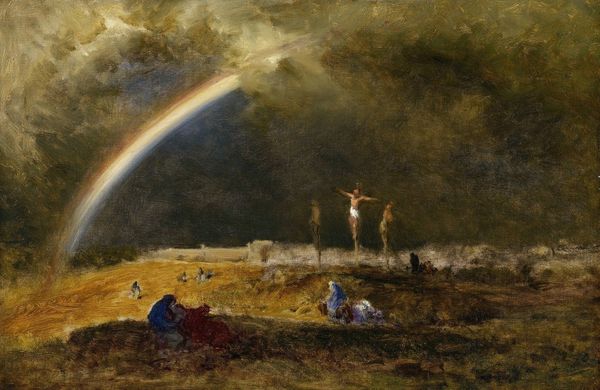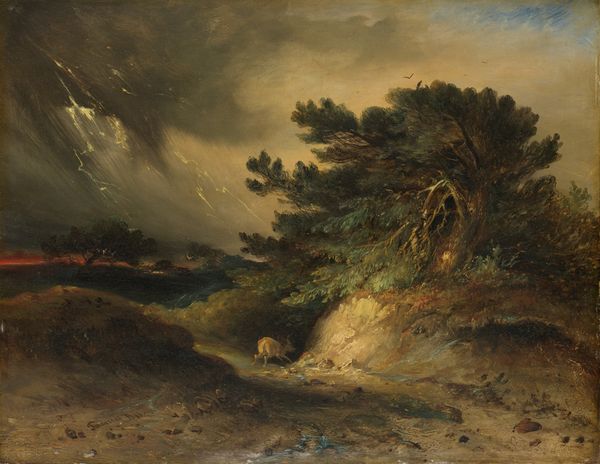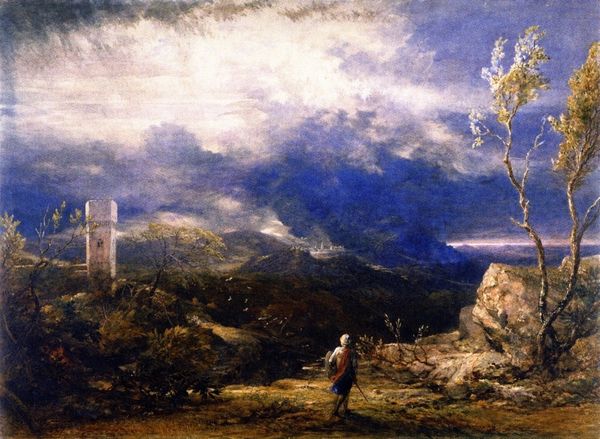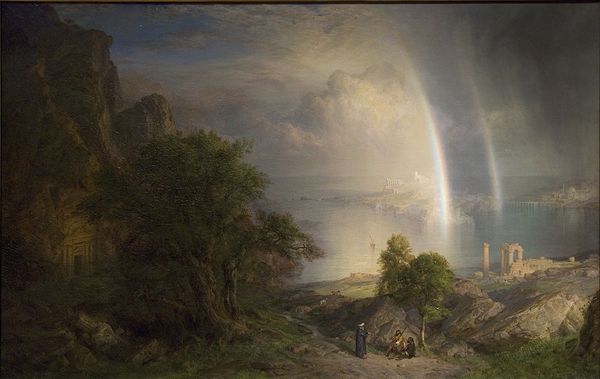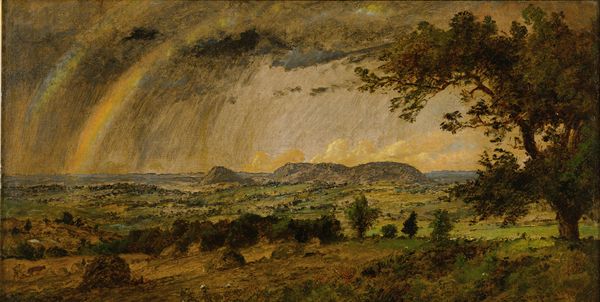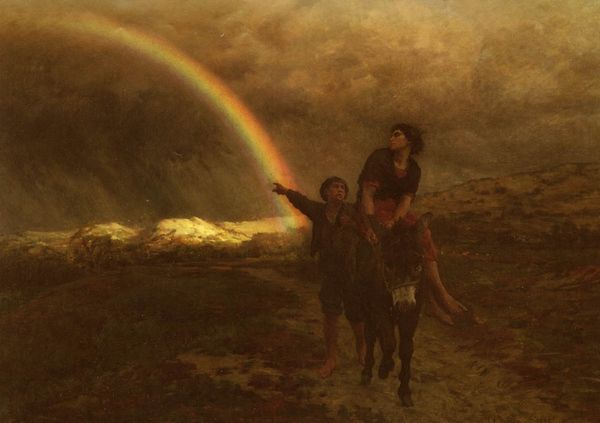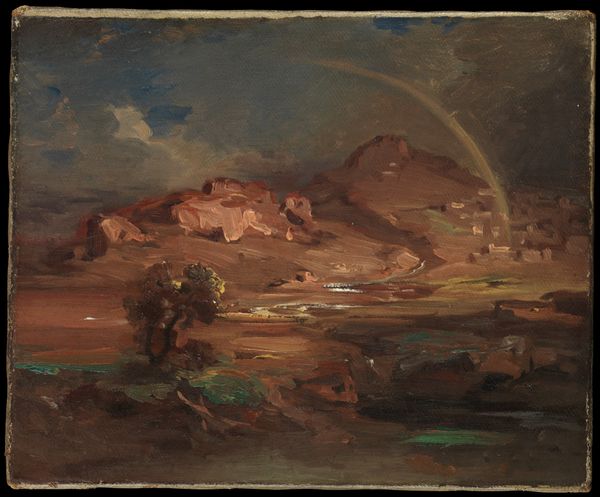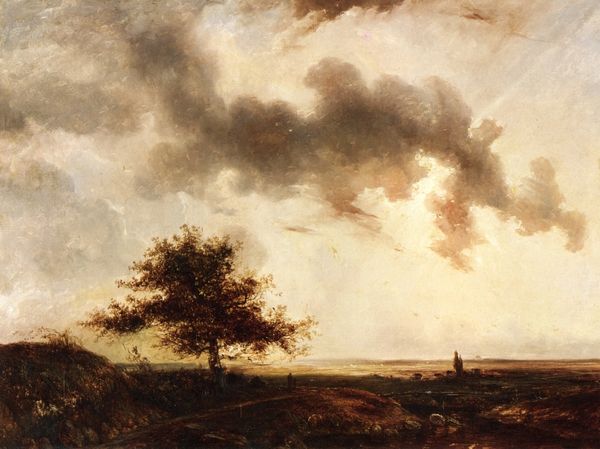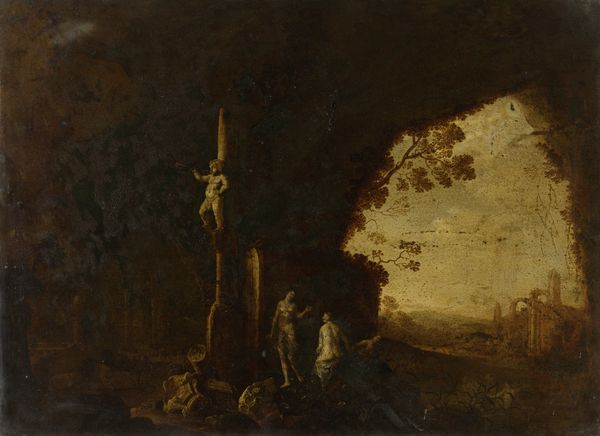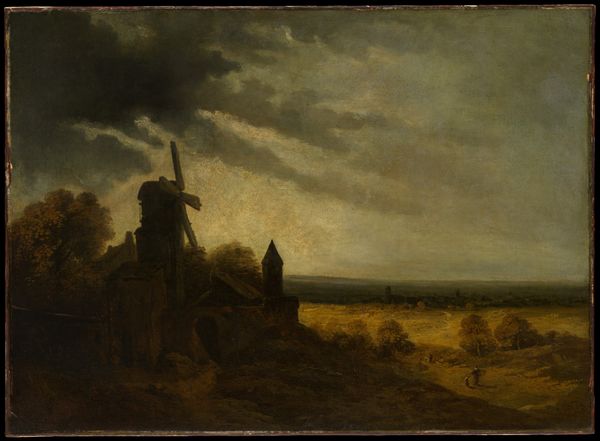
oil-on-canvas
#
cave painting
#
possibly oil pastel
#
underpainting
#
united-states
#
watercolour bleed
#
watercolour illustration
#
munch-inspired
#
surrealist
#
murky
#
oil-on-canvas
#
watercolor
#
mist
Dimensions: 19 9/16 x 29 1/2 in. (49.69 x 74.93 cm) (sight)20 1/4 x 30 3/8 in. (51.44 x 77.15 cm) (canvas)28 3/8 x 38 1/2 in. (72.07 x 97.79 cm) (outer frame)
Copyright: Public Domain
Editor: Here we have George Inness’s "The Triumph at Calvary," painted around 1874 and rendered in oil on canvas. It strikes me as simultaneously bleak and hopeful, with the stark image of the crucifixion set against the vibrancy of a rainbow. How do you interpret this work? Curator: The simultaneous bleakness and hope you observed are key. Inness was deeply interested in the social and political currents of his time. Think about the era – Reconstruction following the American Civil War. A period of intense social upheaval. Doesn’t the crucifixion, as a potent symbol of suffering, feel analogous to the trauma of war and its lingering impact on the collective psyche, particularly marginalized communities? Editor: Absolutely, that makes sense. The positioning of the rainbow does feel significant, like a promise emerging from darkness, doesn’t it? Curator: Precisely. A promise that we need to critically analyze. Consider the religious context – rainbows appear after floods in the Bible, symbolizing God’s covenant. But covenants are inherently political contracts between the powerful and powerless. So, we must ask: Who does this promise serve? Is it a genuine offering of hope or a tool of social control, masking systemic inequalities? The artist presents it more like a mirage. Editor: I see. So, instead of a straightforward symbol of hope, the rainbow becomes something much more complex and challenging. Curator: Exactly. Inness is prompting us to question easy answers and to examine how even seemingly positive symbols can be implicated in larger systems of power. What does triumph truly mean here? What does it look like to rebuild with true justice? Editor: This has really shifted my perspective on the piece. I appreciate the reframing from simple symbolism to complex commentary on social and political power dynamics. Curator: And I'm intrigued by how contemporary readings change the artwork, keeping it ever vital!
Comments
minneapolisinstituteofart about 2 years ago
⋮
The Triumph at Calvary is unusual in its presentation of a specific religious event set in a larger landscape, as the spiritual aspects of Inness's landscapes were never explicit but, instead, hidden within the structure and essence of the composition.
Join the conversation
Join millions of artists and users on Artera today and experience the ultimate creative platform.
